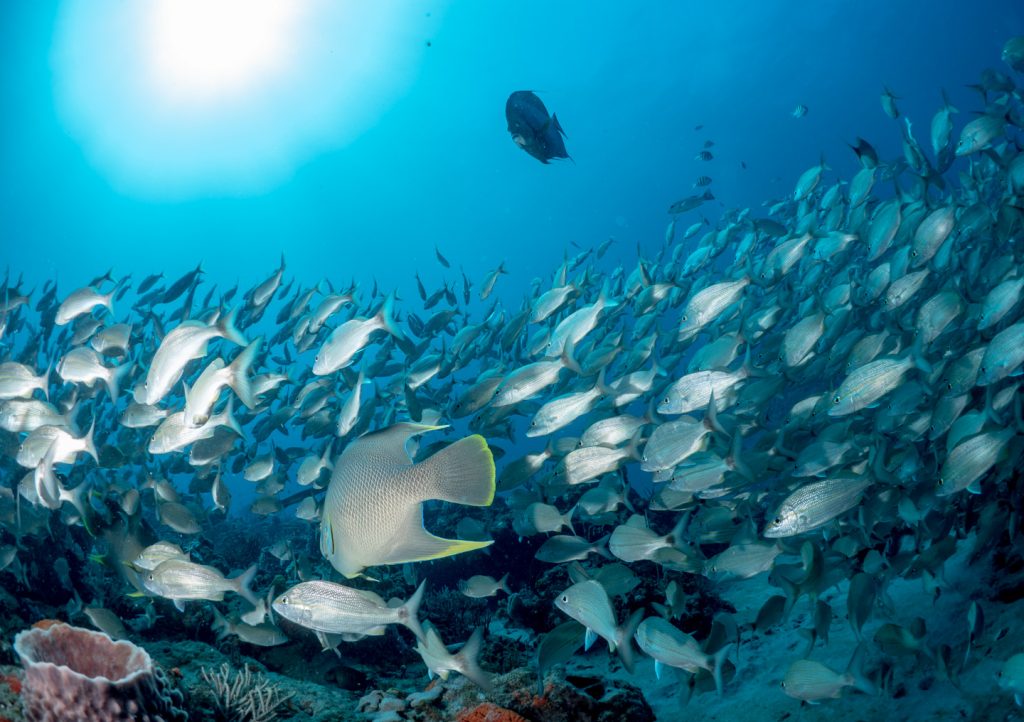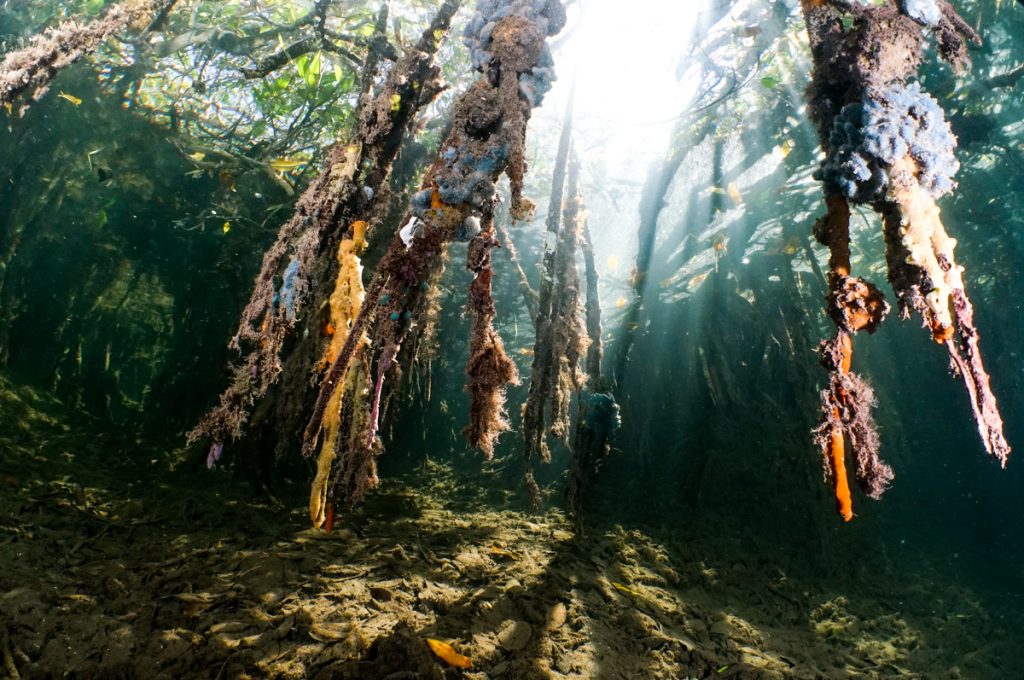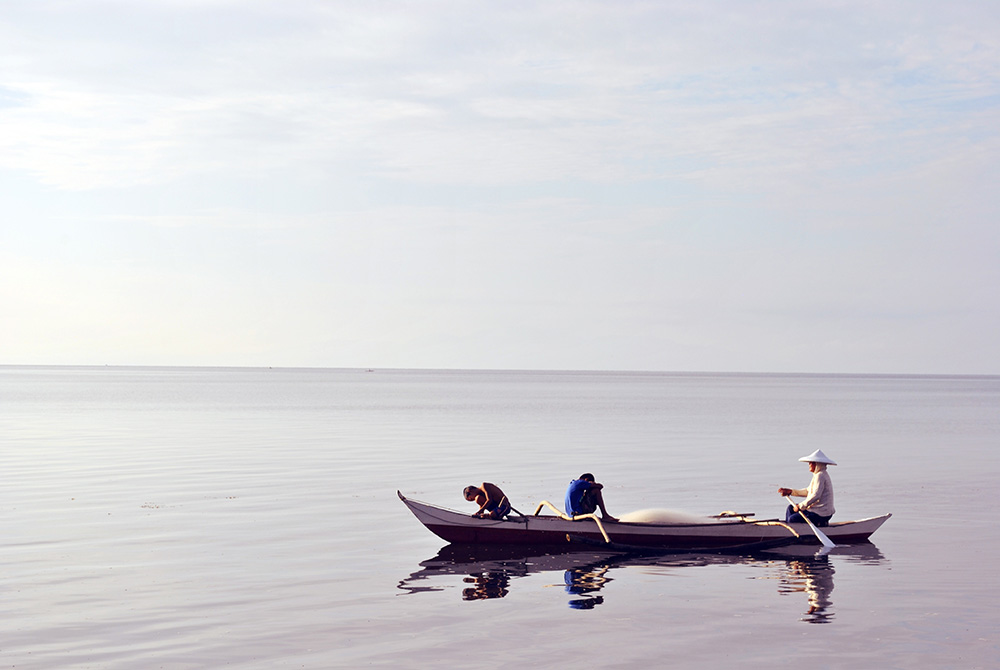Marine Protected Areas (MPAs): behind the scenes

Chances are, if you’re a SCUBA diver, you have visited a marine protected area (MPA). A great deal of diving takes place in MPAs, a term which also applies to fish sanctuaries, no-take zones, and marine national parks. You may already understand why you’re diving there as opposed to somewhere else. Maybe because there’s more fish and better coral, or perhaps to create revenue for a local community. But your one or two dives in a MPA will barely scratch the surface of the science and society behind the scenes.
How MPAs Work – the Basic Version

A MPA, as you might guess from the name, is a designated area of ocean habitat “protected” from human activities. First and foremost, fishing is prohibited, either mostly or completely. So instead of being caught for dinner, the fish inside the MPA grow really large and make lots of babies. (Larger female fish produce more eggs, and fish keep growing as long as they live, never reaching a “cap” size like other animals.) Là voilà: the number of fish in the ocean increases.
Who benefits? Fishermen benefit when the high concentration of fish inside the MPA naturally “spills over” the boundaries into unprotected, fish-able areas. (MPAs are usually marked on the surface with a line of buoys, but there are no walls, so fish can swim freely in and out.) Divers also benefit when they visit a MPA and see lots of large fish!

How MPAs Work – the Nuances
A MPA is an ecosystem-based method of increasing fish populations. This makes it different from regulations on fishnet sizes and fishing seasons, which also stabilize or increase fish populations. In a MPA, the entire reef system, with all its physical structures, plants, invertebrates, and vertebrates, enjoys protection from human impact. Ecosystem protection is critical on coral reefs, where different actors are so intricately interconnected that an impact on one affects everything else.
So besides the harvesting of fish, what does a MPA need to be protected from? Anchors, the hulls of boats, feet, fins, hands, and SCUBA tanks. All of these can physically break coral, the structure-building animal which forms the very backbone of life on the reef. (Click here to learn more about coral) Unfortunately, these particular threats don’t always go away when fishing is outlawed… in fact, tourism sometimes elevates these threats to the point of completely destroying once-beautiful, productive MPAs.
Another important nuance concerns the importance of MPA “networks.” Because marine animals travel (some more than others), and larvae always travel (floating in the current), a MPA’s effectiveness is hugely enhanced when the organisms it nurtures can also find protection in neighboring MPAs. Surprisingly, some properly sized and positioned MPAs can even remain effective when a bit of fishing is allowed! Usually the fishing inside protected areas is limited to low-impact, small-scale methods practiced by the local community. “Zoning” becomes important in these situations- there should be a specific, demarcated areas for each use, whether it’s fish traps, single fishing line, or no fishing at all.
The size and location of a MPA is very important. An ideal protected area has a variety of species and habitats within it, so that if one species or habitat is destroyed by global warming, storms, disease, or predator outbreaks, the other species and habitats keep the ecosystem from collapsing. In tropical areas, coral reef MPAs should actually include seagrass beds and mangrove forests. Many tropical fish and invertebrates spend their childhood in the protected shallow waters of mangroves and seagrass. Some species also travel to mangrove or seagrass zones to find their preferred food source. And these two habitats make incredibly effective barriers between the sensitive coral reef and land-based sediments or nutrients.

Behind the Scenes – the Human Community
So if MPAs are so great, what more is there to say? Setting up an MPA must be as easy as 1-2-3, right?
Wrong, unfortunately. MPAs require people to forgo the immediate benefits of fishing as they’re accustomed to. Profit from selling, and the ease of catching dinner, may decrease for a while. Like with any conservation effort, it’s hard to convince communities to give up instant gratification for years of patience and the rewards of the future.
I work in the Philippines on marine conservation projects and have been around a good deal of locally-managed, small-scale marine protected areas. These MPAs are meant to remedy the emergency situation of the Philippines’ coastal waters, where small-scale fish catch has plummeted from 40 kilos per day in the 1940s to 3 kilos per day or less. (To read more about the state of coral reefs worldwide, and why MPAs are so important, click here) Here are some of the behind the scenes complications I’ve encountered in the course of my work.
Hierarchy of Needs
If fishing is to be reduced in a community, it should be replaced with something else that local people can earn money and/or eat from. Many MPAs are surrounded by disgruntled households who are waiting for the promised profits of increased fish populations or diving fees, the first of which takes time, and the second of which may well be mismanaged, unequally beneficial to different households, and not as much as expected. That’s why it’s best to pair MPA initiatives with alternative livelihood projects.


Money and Political Fishing
In a lot of places where I work, the local government is disproportionately filled with powerful people, and those people are powerful because they have money. Some of the government officials in marine resource-rich areas make their fortunes through commercial (large-scale) fishing. The result? Commercial fishing vessels belonging to the mayors and governors of the country are protected or ignored by the police force, and can enter the MPA with impunity. And it’s relatively common for those who confront illegal commercial fishers to experience death threats and assassination attempts.

Inexperience and Gossip
How a MPA increases fish populations isn’t obvious to most people. Yet, MPAs often get created (by the government, NGOs, or some community members) without effective education for the general community. It’s understandable, therefore, that community members feel angry at the closure of their fishing grounds, and that they go fishing in the sanctuary under cover of darkness, or at times when the underfunded local patrols aren’t on duty. Plenty of misinformation blooms to fill the gaps in communication. I’ve been told by local community members that conservationists only wanted to protect a local MPA because they were earning millions from it, though there had been literally no visiting diver that year.
Mix-ups in Implementation
The journey from the funding of a conservation project to its achievement often goes awry. I’ve seen projects from international aid agencies end up plopping down MPAs in areas that don’t make any sense, like one MPA I surveyed which was bisected by 20 meter-long standing fishnets. The fishnets had been there before the MPA was established, and were not asked to move afterwards. I’ve also seen a MPA of only one hectare (not an effective size), with a habitat of sand (not a productive habitat). To meet quantifiable goals such as “15% coral reef protection by such and such a date,” project implementers often designate MPAs quickly, without comprehensive studies or local consultations, take a picture of the sign, and leave. The fault sometimes lies with them, and often lies with the current system of international aid and development funding, a whole other can of worms.
Tourism, Tourism, Tourism
Too much of a good thing can be a very, very bad thing. In eagerness to earn money from entrance fees to a MPA, local tourism providers almost always put profit over protection. A dive guide supervising 15 people is effectively supervising no one. Too much traffic at crowded mooring buoys means one more anchor smashing a coral colony. Pressure to create attractive tourist sites leads to the sacrifice of some natural spots for others (like in El Nido, Palawan, where visitors are encouraged to walk on corals to get to hidden lagoons.) Please be aware of and comment on how your dive boat interacts with the environment; you, as the customer, are the most influential force on tourism providers.

The next time you dive in a MPA, remember to wonder or ask what obstacles it had to overcome to be established, and what battles it may still be fighting. Consider thinking of it as a part of an ongoing movement, one to which you can contribute even when you’re back at home, by staying informed and active on local and global conservation issues. It’s clear that a MPA is embedded in society at large, affected by society’s structures, cultures, and power systems- so societal support for conservation has a definite impact in the long run, and you can contribute to that movement, even from far away.
- Strange Sharks – February 1, 2018
- Getting to know Jaws: the truth about great white sharks – October 20, 2017
- Reef Sharks: Coral’s Best Friend – September 26, 2017

 CAD
CAD